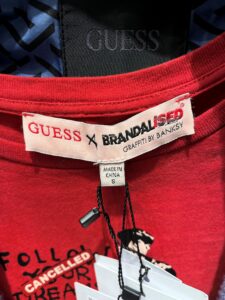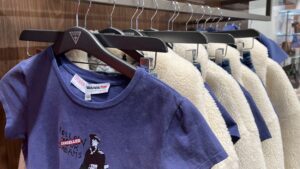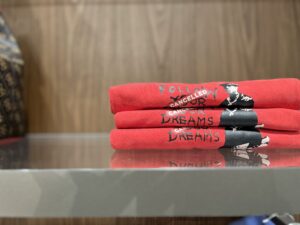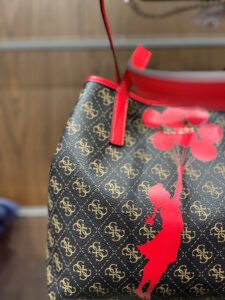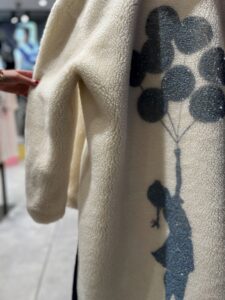

A collaboration between Guess and graffiti license holder Brandalised which has been on display at the fashion retailer’s Regent Street store earlier this month has sparked a copyright dispute with artist Banksy.
Guess’ latest line of products in collaboration with Brandalised was showcased in their London store on Regent Street. Banksy posted a picture of the same on Instagram, with the text: “Attention all shoplifters, please go to GUESS on Regent Street.”
Brandalised is an urban graffiti licence. The company has collaborated with high end brands and artists over the years producing toys, clothes and sculptures. They have created multiple products of Banksy’s artwork so far.
An employee at Guess’ Regent Street store said the company would “never do something like this”, referring to the infringement allegations. The window display featuring the campaign was initially covered up right after Banksy’s post on Instagram.
However, it was soon
restored in a deliberate move. The employee continued: “We have security measures and cameras in place in case of shoplifters. We have done nothing wrong, so we decided to stand for our rights.”
There have been no reported cases of shoplifting in the store since Banksy’s post in which he asked all shoplifters to help themselves to Guess’ clothes because the latter did the same with his artwork without permission.
The campaign features iconic Banksy illustrations like 2007’s ‘Flower Thrower’ and ‘Follow Your Dreams, Cancelled’ from 2010 and the ‘Flying Balloon Girl’. Products include children’s clothing, coats and bags that range from 35 GBP to 230 GBP.
In response to the artist, Brandalised uploaded a post on their Instagram reminding fans that Banksy once said: “Any graffiti in a public space that gives you no choice whether you see it or not is yours. It belongs to you. It’s yours to take, rearrange and re-use.”
Graffiti is protected by copyright law and should not be reproduced for commercial purposes even though it is public. Whilst there is no binding English law court decision on this yet, in 2015 the High Court did comment – when deciding on the ownership of a wall containing a Banksy mural – that Banksy was probably the copyright holder of that work.
Banksy also said: “asking for permission is like asking to keep a rock someone just threw at your head.”
In order to successfully pursue a legal copyright infringement case, the famously anonymous Banksy will have to reveal their identity.
Barrister, Doughty Street Chamber, Jonathan Price said: “Another problem Banksy might find would be how to bring proceedings for breach of copyright whilst maintaining his anonymity. The courts are equipped for this though, and I would expect them to permit him to use his nom de plume in the public facing elements of the case.”
Copyright infringement can be classified as a civil or a criminal offence depending on the nature of the damages. It can lead to a maximum of 10 years imprisonment if charged in a Crown Court.
